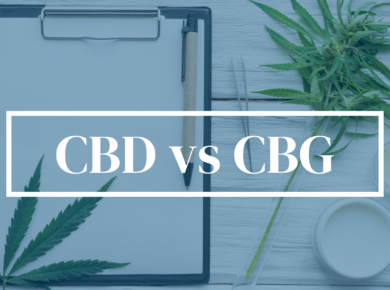CBD (Cannabidiol) and CBL (Cannabicyclol) captivate the attention of scientists and wellness enthusiasts alike as members of the compelling cannabinoid family found in hemp and cannabis plants. These cannabinoids, although sharing a familial bond, diverge intriguingly in their characteristics and impacts on the human body.
CBD, widely recognized and researched, stands out for its non-psychoactive nature, ensuring users do not experience the notorious “high” associated with certain cannabinoids. It engages with the body’s intricate endocannabinoid system, orchestrating a symphony of receptors that govern various physiological functions.
In contrast, CBL, a cannabinoid shrouded in mystery, remains non-psychoactive yet is sparsely found in most cannabis strains. Its formation, a result of the degradation of Cannabichromene (CBC) under the influence of light or heat, presents a unique developmental pathway among cannabinoids.
Despite being under the same cannabinoid umbrella, CBD and CBL differ markedly in their prevalence, endocannabinoid system interactions, and formation processes. To unravel the potentialities and applications of these cannabinoids, further research is imperative.
Many States allow hemp derived cannabinoids under the 2018 Farm Bill as long as they contain less than .3% D9 THC. Some States have explicitly banned cannabinoids like Delta 8, so check your local rules and regulations before purchasing.
Here’s the rules for Kush.com and more details
Frequently Asked Questions (FAQs)
- What Distinguishes CBD from CBL?
- CBD and CBL, while both housed in the cannabis plant, flaunt different chemical structures and concentrations. Notably, CBD is abundant and widely studied, whereas CBL is lesser-known and scarce.
- How Are CBD and CBL Harvested from Hemp?
- Employing similar extraction methodologies, CBD and CBL are most commonly derived via CO2 extraction, utilizing pressurized carbon dioxide to extract the desired cannabinoids.
- Can CBD and CBL Be Combined?
- Indeed, CBD and CBL can coexist in products, often appearing together in full-spectrum cannabinoid items. However, the collective effects of these cannabinoids necessitate further exploration and understanding.
- What is the Legal Landscape for CBD and CBL?
- The legality of CBD and CBL oscillates based on geographical location. Generally, hemp-derived CBD is legal in numerous locales, whereas CBL’s legal status might be ambiguous due to its obscurity. Always verify local laws and guidelines.
- Are There Side Effects Tied to CBD and CBL?
- Potential side effects, such as mild drowsiness or dry mouth, might be experienced by some CBD users. Conversely, CBL’s potential side effects are currently under-researched. Always seek professional advice before commencing any new supplement regimen.
Shop
Similar Product Searches You Might Be Interested In:





